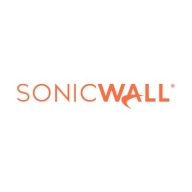


SonicWall NSa and Palo Alto Networks VM-Series are popular network security solutions. Palo Alto Networks VM-Series appears to have the upper hand due to its advanced features.
Features: SonicWall NSa users highlight its VPN capabilities, threat detection, and comprehensive reporting. Palo Alto Networks VM-Series users value its intrusion prevention system, deep packet inspection, and automation capabilities. Although both offer strong security, Palo Alto Networks VM-Series provides more advanced technology.
Room for Improvement: SonicWall NSa users suggest better scalability and enhanced integration with third-party applications. Palo Alto Networks VM-Series users recommend simplifying the configuration process and improving real-time reporting. Palo Alto Networks VM-Series shows more potential due to its innovative features.
Ease of Deployment and Customer Service: SonicWall NSa is generally easier to deploy and is backed by responsive customer service. Palo Alto Networks VM-Series users report a steeper learning curve but benefit from comprehensive support and detailed documentation. The initial deployment may be smoother with SonicWall NSa, but Palo Alto Networks VM-Series offers robust post-deployment assistance.
Pricing and ROI: SonicWall NSa is considered more budget-friendly with a quicker ROI. Users feel it provides good value for money. Palo Alto Networks VM-Series entails higher setup costs but delivers superior security features, justifying the investment over time. Despite the higher costs, Palo Alto Networks VM-Series leads to a favorable ROI for those needing sophisticated network security.
Clients are now comfortable and not wasting productive hours on IT support.
The automation part is giving us a cost benefit and speed; we can react faster.
It's a very useful tool to mitigate and protect your enterprise.
Customers can see data within a week, indicating a quick return on investment.
They offer very accurate solutions.
The quick resolution of issues with Fortinet FortiGate is due to the support of the company and the fact that the equipment is easy to work with.
I would rate the technical support for Fortinet FortiGate a ten out of ten.
The support quality could be improved.
Resolving issues promptly.
They are responsive and provide high-quality assistance.
The support from SonicWall was excellent.
SonicWall support is very helpful and responsive.
They scale up really well from smaller models like the FortiGate 40 and 50 to bigger sites with the FortiGate 100 for more throughput - up to enterprise datacenters.
The variation comes in terms of the interfaces and throughputs, but from a security perspective, you get the same benefit, irrespective of whether you have an entry-level unit or an enterprise.
We determine sizing based on multiple factors: number of users, available links, traffic types, server count, services in use, and whether services will be published.
They are easy to upgrade, and with credit licensing, they scale effectively according to demand.
The solution is scalable and can easily handle an increase in the number of users.
It is easy to use with an excellent graphical user interface and extensive documentation, which contributes to its high scalability.
I would rate its scalability around eight out of ten, meaning there are no issues, and it is pretty easy to scale.
We're experiencing 99.999% availability consistently.
I would rate the stability of Fortinet FortiGate a ten out of ten.
Currently, we are experiencing a general outage of one of the main internet service providers of the Dominican Republic, and we have not been impacted in our operations because with SD-WAN, we have another internet service provider and we are working with the second WAN connection without any disruption.
Hardware is generally very stable.
I have not experienced any major problems or downtime.
Perfection is unlikely as the dynamic nature of traffic and constant changes can result in occasional bugs despite regular updates.
The stability of SonicWall NSA is quite good.
Investing in a solution that can accommodate such growth would be more cost-effective than repeatedly purchasing new hardware.
The constant daily revisions necessitate meticulous identification of the relevant documents to prevent the use of outdated information that could jeopardize our environment.
While Fortinet claims to offer a comprehensive network solution, it falls short in addressing computer application issues, particularly server security.
Integration with CSIRT across all use levels would make it easier for administrators to stay updated on the blocked entities without manual intervention.
Most customers go for partner-enabled support, which involves multiple layers, leading to delays.
When managing the firewall, it involves a Strata Cloud web browser that requires improvement to enhance deployment ease and call center efficiency.
More details in the analytical tools offered would be appreciated since it is not yet mature.
There are some aspects of the dashboard configuration or customization that could be improved.
FortiGate is priced lower than Palo Alto.
Last year, I renewed the support for three years, which can sometimes be expensive but depends on the security benefits and how it helps us.
It is about 20% cheaper.
Palo Alto is expensive in terms of pricing, particularly when comparing features to cost.
The cost involves purchasing through a vendor, which might mark up due to the supply chain.
Pricing for Palo Alto Networks is higher than other OEMs, but considering the robustness and features, it gains customer trust.
SonicWall is much cheaper compared to Fortinet, particularly regarding renewal and licensing costs.
I would rate the price of the product as seven out of ten.
In terms of security, we have not experienced any security flaws or loopholes, and it has proven to be quite stable.
FortiGate has helped reduce the risk of cyberattacks that might disrupt our client's production.
These features help reduce our downtime, manage the ISPs, and deploy SLAs for all the website traffic.
We use these tools to prevent all known and unknown threats using Palo Alto Networks' Wildfire and other data filtering tools to gather information, analyze traffic, manage malicious traffic, and offer visibility, control, and attack prevention.
Palo Alto's robust threat intelligence supports new updates, and I can open cases directly with their Threat Intelligence team.
The DNS security significantly enhances security through visibility and detection, allowing control over crucial traffic like DNS, which is often exploited by ransomware.
Real-time deep memory inspection is very helpful and has had a positive impact on our security posture.
SonicWall NSA's most valuable features are its SD-WAN and a system RTBI that blocks all attacks.



Fortinet FortiGate offers comprehensive network security and firewall protection across multiple locations. It effectively manages data traffic and secures environments with features like VPN, intrusion prevention, and UTM controls.
Organizations rely on Fortinet FortiGate for its robust integration with advanced security policies, ensuring significant protection for enterprises, cloud environments, and educational sectors. It facilitates network segmentation, application-level security, and authentication management, securing communication within and between locations such as branches and data centers. Its efficient SD-WAN and UTM features enable streamlined data management and enhanced threat protection capabilities. Users appreciate its centralized management, facilitating seamless operations across diverse environments.
What are the key features of Fortinet FortiGate?
What benefits should users expect from Fortinet FortiGate?
Fortinet FortiGate is crucial in sectors like education, offering robust networks for secure data flow between campuses and facilitating remote learning. In enterprise environments, it allows efficient management of application traffic and security across multiple branches, while in the cloud, it seamlessly integrates with diverse platforms to enhance security infrastructure.
Palo Alto Networks VM-Series is a highly effective advanced threat protection (ATP) solution and firewall that can be hosted on cloud computing technologies designed by many different companies. It decreases the amount of time that it will take administrators to respond to threats. Users that deploy VM-series have 70% less downtime than those who use similar firewalls. Neither protection nor efficiency are concerns when this next-generation firewall is in play.
VM-Series is being deployed to protect both public and private cloud environments. This level of flexibility empowers organizations to run the environment or environments that best meet their needs without worrying that they are going to be exposed to digital threats due to the environment that they choose.
In the public cloud, users of Palo Alto Networks VM-Series can automate their deployment and dynamically scale up their environment while experiencing a consistent level of protection. This dynamic scalability means that they also integrate their security into their DevOps workflows so that their security can keep up with their activities and requirements. Users of private cloud environments can set up security policies that can be automated to be provisioned as the need arises. Organizations don’t need to slow down when they deploy VM-Series because it makes the task of defending them so simple that they can set their defenses and forget that they are even there.
Users gain a deep level of visibility when they deploy Palo Alto Networks VM-Series. App-ID technology enables organizations to see their network traffic on the application level and spot threats that might be trying to sneak in through vulnerable points in their defenses. It also leverages Palo Alto Networks WildFire and advanced threat protection to block the threats before they can escalate.
Palo Alto Networks VM-Series Features:
Reviews from Real Users:
Palo Alto Networks VM-Series is a solution that stands out when compared to other similar solutions. Two major advantages that it offers are its ability to protect users without degrading the efficiency with which their networks perform and its centralized management system.
Jason H., the director of information technology at Tavoca Inc, writes, “There is no noticeable trade-off between security and network performance. In fact, so far, we've not seen any negative network performance with it. We're very impressed in that regard.”
An information technology manager at a tech services company says, “We use Palo Alto’s Panorama centralized management system. We have an on-prem firewall where Panorama is very good for pulling logs in from the cloud so we can see what is going on. It gives us visibility into that as well as shows us what attacks are coming in. Palo Alto’s Panorama centralized management system simplifies our security posture based on our requirements. Instead of manually pulling logs, then generating them into readable formats, it gives us the console in a readable format to view.”
SonicWall NSa dispenses advanced threat protection using a high-performance security platform. The NSa series implements intuitive deep learning technologies in the SonicWall Capture Cloud Platform to dispatch the automated real-time threat detection and deterrence enterprise organizations need today. SonicWall Network Security appliance (NSa) series is best for mid-sized organizations to distributed enterprises and data centers.
SonicWall NSa series next-generation firewalls (NFGWS) combine two very robust security ideologies to deliver advanced threat protection to keep users’ networks safe. Boosting SonicWall’s multi-engine advanced threat protection (ATP) is their Real-time Deep Memory Inspection (RTDMI™). The RTDMI intuitively identifies and stops aggressive zero-day threats and vicious malware by investigating memory directly. This real-time process allows SonicWall RTDMI to be accurate, lessen false positives and discover and alleviate malicious threats and attacks. SonicWall’s single-pass Reassembly-Free Deep Packet Inspection (RFDPI) will audit every byte of each and every packet by investigating both outbound and inbound traffic on the firewall. By combining the SonicWall Capture Cloud Platform along with on-box offerings such as intrusion prevention, web/URL filtering, and anti-malware, the NSa series is able to block the most malicious and dangerous threats at the gateway.
Additionally, SonicWall firewalls supply absolute protection by executing complete inspection and decryption of SSH and TLS/SSL encryption connections - no matter the port or protocol. The firewall takes a deep dive into each and every packet (the header and data) routing out any anomalies, zero-day intrusions, threats, and protocol non-compliance. Users can also define unique criteria specific to their organization to ensure their networks remain safe. This aggressive deep packet inspection is able to identify and block malicious attacks, stop dangerous malware downloads, prevent the spread of infections, and defeat command and control (C&C) communications and data exfiltration. Protocols involving inclusion and exclusion allow users complete control to decide, based on specific governance policies, organizational policies, or government or legal compliance, which traffic is to be investigated for decryption or inspection.
SonicWall Nsa offers enterprise organizations the network control and fluid flexibility they desire using an intrusion prevention system (IPS), VPN, real-time visualization, and other advanced powerful security features, making it a popular firewall solution in today's marketplace.
Reviews from Real Users
“The features that I have found most valuable are the firewalling, which is very good, and the GUI which is very intuitive. It is easy to use and provides great security.” - Network Engineer at a maritime company
“What's valuable in SonicWall NSa is the ATP (advanced threat protection). It can protect users from malicious links. SonicWall NSa also has a Sandboxing service that is very helpful for us, especially when end users accidentally click on malicious links. Another valuable feature of this solution is that it is very useful for site-to-site VPN connectivity issues. SonicWall NSa has very good hardware. I also love that SonicWall has very good technical support, who are very knowledgeable, provide good suggestions, and they're easy to reach.” - Mohammed M., Network Administrator at Transgulf Readymix
We monitor all Firewalls reviews to prevent fraudulent reviews and keep review quality high. We do not post reviews by company employees or direct competitors. We validate each review for authenticity via cross-reference with LinkedIn, and personal follow-up with the reviewer when necessary.